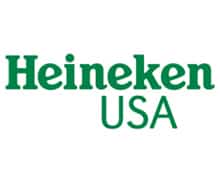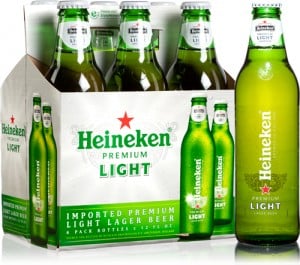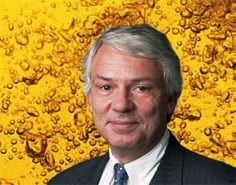By Anne Brugts, Content Manager Story Terrace
Heineken in the USA
Frans van der Minne was CEO Heineken USA from 2000 to 2005. He tells Story Terrace of his experiences in the land of opportunities. A narrative about the ‘beer puddle’, premium brand strategy and passion.
In the lobby of the Hotel de l’Europe, I meet Frans van der Minne. Slowly, he is withdrawing from Heineken, now he’s reached the pensionable age. With little steps, that is: ‘Weeding for five days in a row doesn’t seem like much fun’, he elaborates. So he is still involved in a few Heineken boards, among them Hotel de l’Europe.
An easy choice
Van der Minne’s career with Heineken is impressive and covers various sectors within the company. Still, he didn’t join Heineken right after school. ‘I started in shipping. It was 1974 and the industry suffered from the oil crisis. Thus, I started to explore my opportunities and this led to a choice: I could start working with Heineken as well as with a pharmaceutical company. It was either selling pills or beer. An easy choice.’
He started as a catering industry representative in Holland and fulfilled a few more positions in Holland before setting foot on foreign soil. ‘First I worked in Singapore, Australia, Ireland, and many more countries. Then I was asked to become the head export in Amsterdam, so I returned for a few years, before I was asked to become CEO Heineken USA.’
Import of the green bottle
Heineken USA has its own very specific history. It was – and still is – an export market. There is no brewery. To get access to this market, they had to find an importer, someone who would formally represent and distribute the beer. One of the former directors of export at the time, mister Feith, went to the USA in 1937 to find such a person. On his way there, aboard the ‘Holland Amerika Lijn’ (Dutch-Americas ferry, ed.), he met a certain mister Van Munching. This Dutchman was working on the boat as a steward and there was an immediate spark between the two. Van Munching had a thorough network by means of his current job and he made it known that he was interested in importing Heineken beer to the east coast.
 Mister Van Munching had one condition: the beer had to be sold in green bottles. ‘Traditionally the Heineken bottle was green, but they had recently started selling brown bottles in Holland. The one tricky thing was that they couldn’t produce the green glass in Holland anymore, which caused a very unwieldy trajectory. The glass was produced in the USA, shipped to Holland, where it was bottled in the Rotterdam port, and then again shipped back to the USA. That was an expensive operation that led to an increased price of the product. Like that, and without any strategic considerations beforehand, Heineken beer became a premium product in the USA. An opportunity led to the premium brand strategy.’
Mister Van Munching had one condition: the beer had to be sold in green bottles. ‘Traditionally the Heineken bottle was green, but they had recently started selling brown bottles in Holland. The one tricky thing was that they couldn’t produce the green glass in Holland anymore, which caused a very unwieldy trajectory. The glass was produced in the USA, shipped to Holland, where it was bottled in the Rotterdam port, and then again shipped back to the USA. That was an expensive operation that led to an increased price of the product. Like that, and without any strategic considerations beforehand, Heineken beer became a premium product in the USA. An opportunity led to the premium brand strategy.’
The introduction of Heineken beer in the USA was made possible by Van Munchings business instinct. ‘During the period that Van Munching was operating, there wasn’t any large-scale marketing for products. Who wanted to sell, needed to rely on pure selling skills, a network and a lot of will power. Van Munching had a special strategy. He started with sending a student to a café, who would as for Heineken beer. They didn’t have the beer, but the name was introduced. A week later, another student would come in, asking the same question. Then, yet another week later, Van Munching himself would come knocking on the door, carrying a crate to sell.’
Profits in the States
When Van der Minne started in the USA in 2000, the importers-legacy of Van Munching was transformed into Heineken Holding USA. It was a turbulent time in the States. In this period, the 9-11 disaster took place. ‘I was in Las Vegas for a congress when it happened. Of course, I wanted to return to New York as quickly as possible, to be with my employees. But air traffic was shut down and we couldn’t leave. Then we decided to rent three campers and working in shifts, we made way to New York. It was an event where something dreadful led to togetherness.’
The after-effects of 9-11 were noticeable in Heineken sales. ‘The consumer was down. The dollar sank, we sold less beer and we had to raise the price. We couldn’t economize the organisation, though, and saving on advertising expenses is a risk as you can undermine the product.’
Besides, there was another threat: the market share of competitor Corona rose. ‘There was an immigration surge from Mexico and Latin-America and the immigrants brought their own beer. The Corono beers were traded by Femsa. More or less by accident I met the Femsa heads and it appeared they were looking for a new distributor. I immediately raised my hand and Heineken was appointed for the job. This success on operational level has led to further conversations between Heineken and Femsa and this culminated in the acquisition of Femsa in 2010.’
 Another merit of the Van der Minne team was the introduction of Heineken light. ‘The American market is the only one where the light beer has reached adulthood. Not less than half of the “beer puddle” is light beer. Thus, there was a big chance. The introduction of Heineken light went according to plan. In its first year, we reached a sale of 800 hectolitre, that’s about 10 million crates.’
Another merit of the Van der Minne team was the introduction of Heineken light. ‘The American market is the only one where the light beer has reached adulthood. Not less than half of the “beer puddle” is light beer. Thus, there was a big chance. The introduction of Heineken light went according to plan. In its first year, we reached a sale of 800 hectolitre, that’s about 10 million crates.’
The Heineken spirit
In sales and marketing strategies the team in the States had to consider the image of the beer in the area. ‘In Holland, Heineken beer is a standard beer. In the USA, we were handling beer with a premium nature. For a Heineken beer, you would pay 8 dollars in a regular New York City bar; opposed to 5 dollars for a local beer. That’s why Heineken in the USA is connected to an occasion. You don’t drink eight Heinekens against the thirst. You’ll drink a Heineken to impress your friends or your boss. You want to give the impression that you’re upper class, well-education and that you earn enough money.’
Also within the organisation the Heineken spirit grew with Van der Minne as CEO. ‘We turned the Van Munching organisation into a true Heineken organisation. That’s the spirit, the culture and loyalty. The Heineken feeling had to flourish with the new generation as well as with the older. What that feeling is? It has something to do with quality, pride and passion. Especially passion. To me that’s the difference between liking something and loving it. Passion will emit to the surroundings and inspires the people around you.’
—————-
About us: Story Terrace helps customers to capture personal stories in beautiful books alongside a professional writer. Our writers have a range of backgrounds and interests, sharing one passion: Portraying individuals through carefully crafted anecdotes and lively stories.
For more information on having your stories written down, send an e-mail to info@ or get in touch via our contact form.
This month we celebrate 150 years Heineken. Also read our article Heineken Black and White. What does Heineken mean to you?




